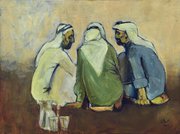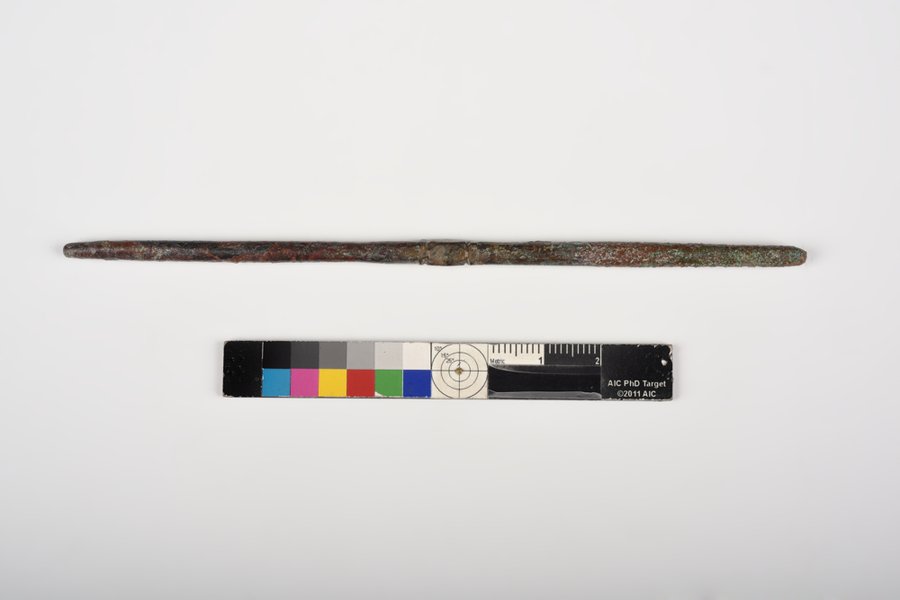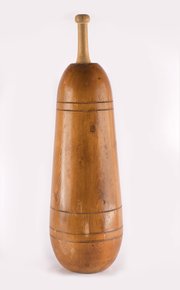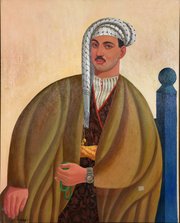
Kohl Applicator
National Museum of Qatar
- Title:
- Kohl Applicator
- Production place:
- Mesopotamia
- Date:
- 805 - 885
- Period:
- 9th century CE
- Title:
- Kohl Applicator
- Production place:
- Mesopotamia
- Date:
- 805 - 885
- Period:
- 9th century CE
- Material:
- Metal, Copper alloy
- Dimensions:
- 134 mm
- Diameter:
- 6 mm
This thin cylindrical stick made of copper alloy was used to apply eye make-up called kohl. It has a bulge in the centre allowing the user to hold it firmly. A type of powder, Khol would be applied to the inner edge of the eyelids for aesthetic reasons, but also helped to prevent eye infections due to its medicinal properties.
Popular since Pharaonic Egypt (3rd millennium BCE), kohl was used by men, women and children and its use continued into the early Islamic era. The best varieties come from Iran. Khol is made from many different recipes, often handed down over generations through families and health practitioners. It could be made from metallic powder with medicinal properties, including lead and antimony, with animal fat, burnt wood and bitumen. By varying the ingredients, it was possible to create a variety of colours ranging from deep black to dark blue, dark red, purple and even shades of yellow.
Testament to a flourishing trade network, more than half a dozen examples of kohl sticks have been found in excavations of the 9th-century houses in Murwab, northwest Qatar.



